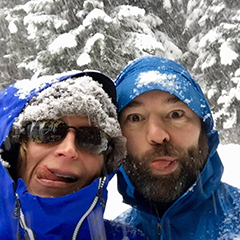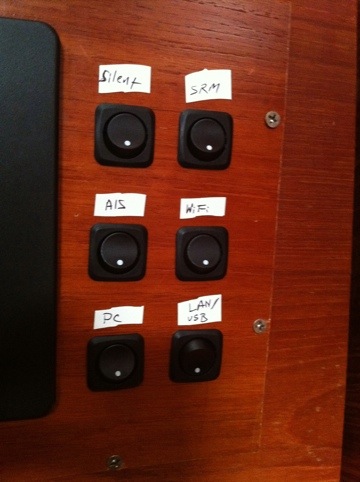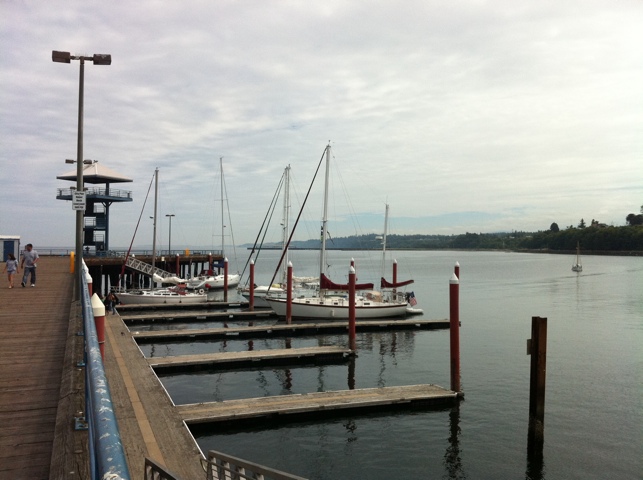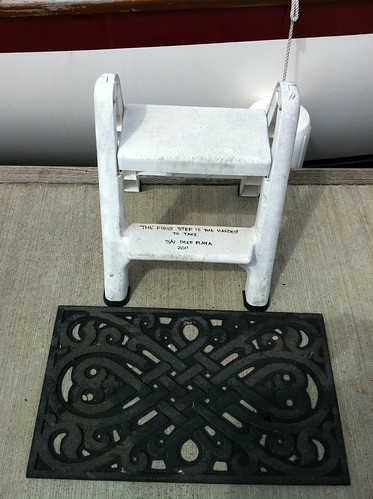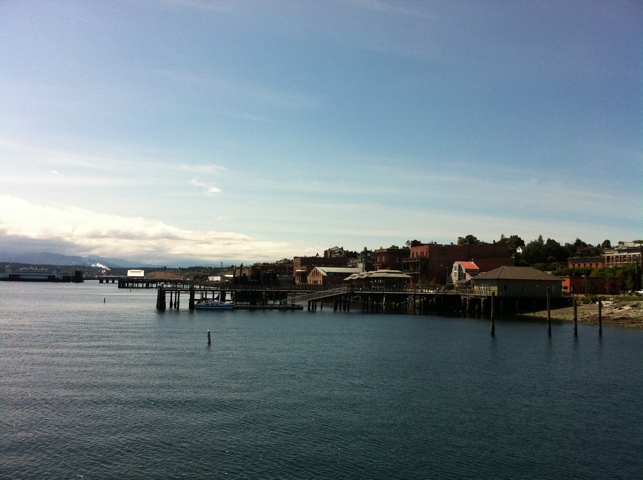Battery and Alternator Upgrade
Posted on Tue 20 September 2011 in Systems - Electrical
We’ve hinted at bits and pieces of this along the way, but I wanted to write up a more formal review of the changes we made this week while we had the engine out to replace the fuel tank.
Our original battery system was 2 banks of 4 and 2 6Volt batteries that were combined to make two banks of 220Amp Hours and 440 Amp Hours each. This was proving to be a bit limiting. I also suspect our batteries are waning and we’ll replace likely replace them further down the road. However, for now what we’ve done is create on large house bank combining all of these batteries into one 660 Amp Hour bank and we added a second 12V dedicated starting battery.
The new positive post of the new battery is wired directly to the starter and the negative joins the common negative bus in the house bank battery trays (i.e., they are wired together).
We already had a Blue Sea Automatic Charge Relay which combines both banks whenever it sees an adequate input charging current on either bank. For us this means that when the alternator is charging the starting battery it will combine and also charge the House, or when the solar and\or AC Shore Power Charger is charging it the House it will also top-up the starting battery. This second possibility is called a dual sensing ACR and is somewhat less known about, read the Blue Sea Page on ACRs for more on that.
The battery changes should give us adequate power to not have to run engine for charging as frequently. However our alternator was only 65Amps and it had an internal single-stage regulator.
We upgraded our alternator to a 100amp Leece-Neville 8MR2401UA which was a physical drop-in replacement (same size, bolt pattern etc.) as our smaller 65Amp Leece-Neville. This was the maximum size we can run our engine with a single 1/2” belt.
We also replaced the internal regulator on the new alternator with a Balmar MC-614 three-stage or smart regulator.This regulator senses the voltage of the battery, temperature of the battery and the alternator and adjust the output of the alternator to provide the best charging current given the state of the batteries and the environment conditions.
The process seemed like it was going to be:
- remove the old alternator form the engine
- remove the internal regulator from the new alternator and install the conversion kit to allow the alternator to be controlled by the external regulator. There are excellent step-by-step instructions on that here.
- Bolt the new regulator onto the engine
- Wire the external regulator to the alternator, Ignition (or a pump driven solenoid which turns the regulator on and off) and its sensors to the battery bank (temperature and voltage) and alternator (temperature)
- Mount the external regulator
Seems pretty straight-forward and in fact all of that took a few hours. This is where easy goes crazy…. I was doing this over the weekend and all of the pre-tests Balmar says you should run using your voltmeter were not working properly. I spent at least a day tracing wires all over the engine compartment, under the cockpit floor and the lazarette to ensure I was wiring the thing correctly. But despite seeming to be wired correctly, in the end it wasn’t working right and the problem had to do with how much the new alternator and the old alternator differed from each other. The old alternator was case-grounded which means it was grounded through the way it was bolted to the engine. The new alternator was externally grounded which means you need to run a wire from the negative (-) post on the alternator back to the negative (-) on the batteries (our your common ground).
It took about an hour on the phone with Rich from Balmar and his patient troubleshooting guidance (and an emailed picture of my wiring) for him to come to the conclusion about my ground problem with the alternator. We borrowed a jumper cable from the always helpful Kyle Cox at Tarheel Aluminum Fabrication (he made our tank) and we tested our theory… BINGO! Everything was working yaay!!! Phone support, let me restate that. Knowledgeable, technical, skilled phone support is awesome thank you Balmar!
Now our alternator and regulator are working properly!
